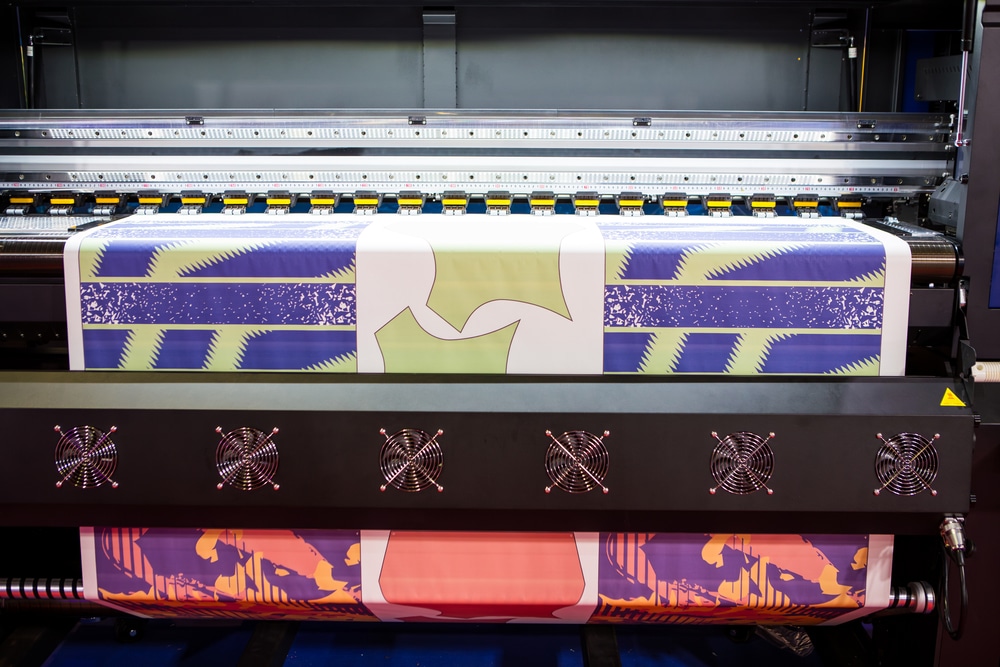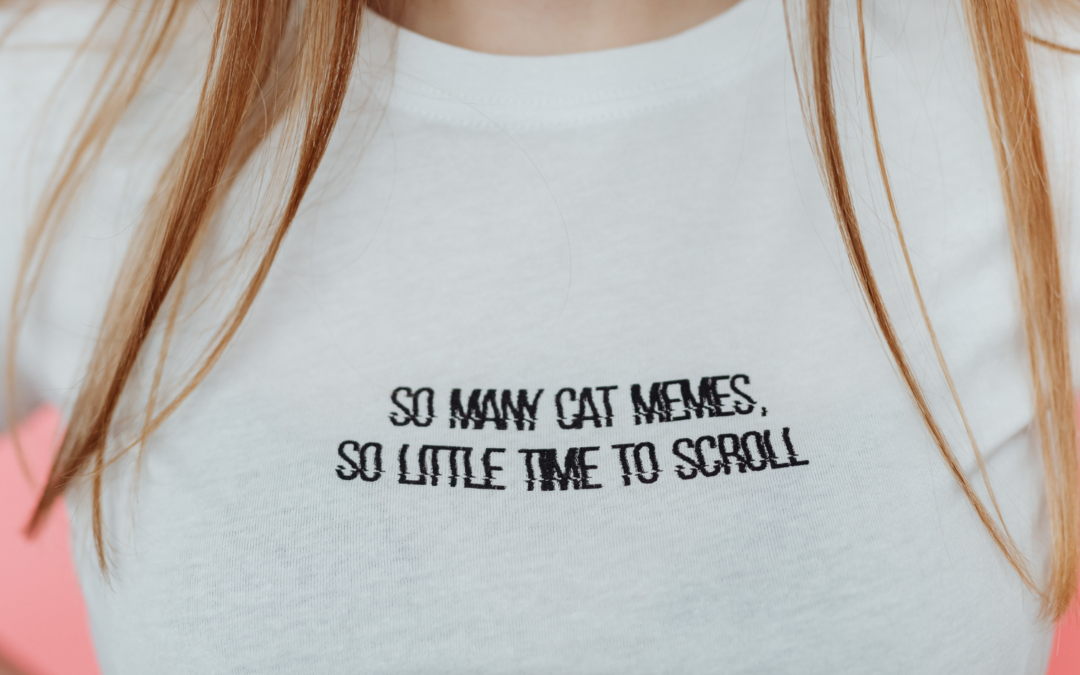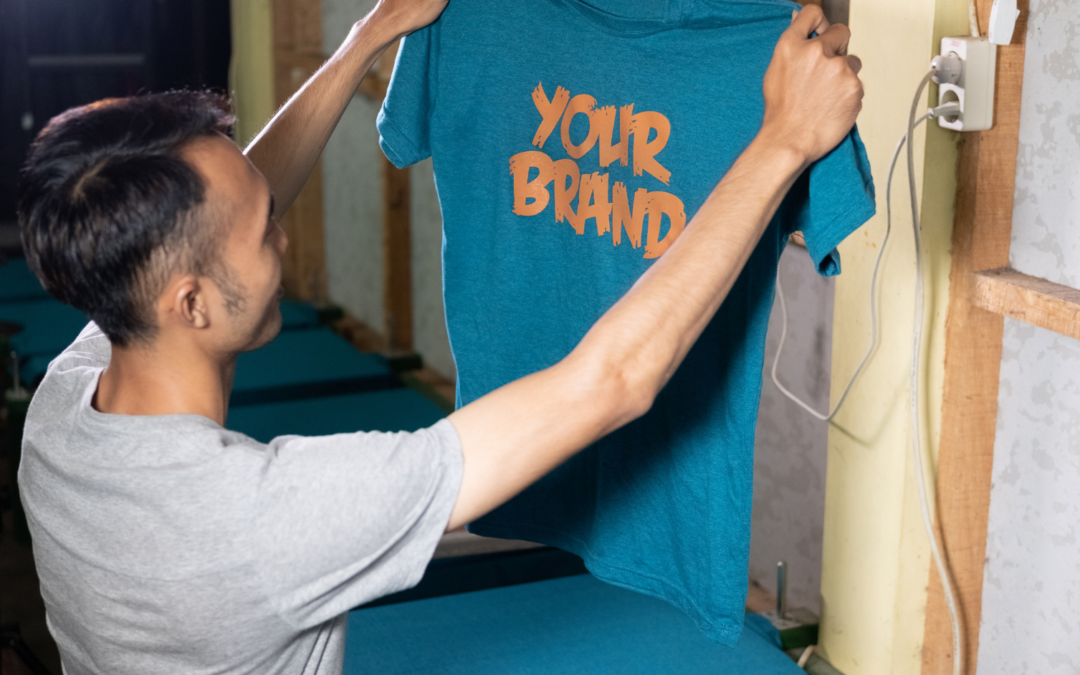Direct-to-Film (DTF) printing is revolutionizing the custom apparel industry with its ability to produce vibrant, durable prints on virtually any fabric. This innovative printing method, also known as DTF direct to film, is gaining popularity for its high-quality results.
The DTF process involves printing designs directly onto a PET film, applying adhesive powder, and then heat transferring the design onto fabric. This allows for printing designs directly onto film for transfer, making it a cost-effective solution for creating high-quality custom merchandise without the limitations of traditional printing methods.
DTF printing works differently from screen printing, DTG printing, and sublimation printing. DTF printing work involves using a direct-to-film printer to produce high-quality images, and it is important to use proper material handling and professional equipment for the best results.
While screen print transfers are a traditional method for fabric decoration, DTG (direct to garment) printing uses a DTG printer to apply ink directly onto fabric, which is ideal for high-detail designs but can be limited by fabric type and pre-treatment requirements.
In contrast, DTF printing creates transfers that can be applied to cotton, polyester, blends, and even unconventional materials like leather and wood.
This versatility makes it an attractive option for businesses looking to expand their product offerings, including t-shirts, t-shirt printing, and shirt printing for custom apparel production. You can also print DTF transfers for customizing apparel and promotional products.
The growing popularity of DTF printing stems from its exceptional print quality, cost effectiveness, and ability to handle intricate designs with fine details. Whether you’re running a small batch printing operation or planning large-scale production, understanding DTF printing technology can help you make informed decisions for your printing business.

Understanding the DTF Printing Process
The DTF printing process involves several key steps that work together to create durable, high-quality prints. Understanding each step helps ensure consistent results and optimal print quality.
Step 1: Design Creation and Printing
The process begins with printing your design onto a special PET film using a DTF printer. This specialized inkjet printer uses DTF printer ink, including essential white ink that provides opacity and color vibrancy. The printer applies CMYK inks along with the white ink layer to create the complete design on the transfer film.
Step 2: Adhesive Powder Application
Immediately after printing, while the ink is still wet, hot-melt adhesive powder is applied to the printed design. This powder bonds with the wet ink and creates the adhesive layer necessary for transferring the design to fabric. The timing of this step is crucial for proper adhesion.
Step 3: Curing Process
The printed film with adhesive powder then goes through a curing process, typically using heat to melt and set the adhesive powder. This step ensures the transfer is ready for application and creates the proper bond between the ink and adhesive.
Step 4: Heat Press Application
Finally, the cured DTF transfer is heat pressed onto the desired fabric using a heat press machine. This step uses controlled heat and pressure to activate the adhesive and permanently transfer the design onto the fabric, ensuring the print’s durability and longevity.

Sublimation printer printing T shirt show in Garment and Textile Manufacturing Industry.
DTF Printer Technology
DTF printer technology represents a significant advancement in digital printing. Unlike traditional DTG printers that print directly onto pre-treated garments, DTF printers create intermediate transfers that can be stored and applied later. This system offers greater flexibility and efficiency for printing businesses.
Modern DTF printers function as advanced inkjet printers specifically designed for transfer film printing. They utilize specialized DTF inks formulated to work with the transfer process and produce vibrant colors that remain bright after heat pressing. The white ink layer is particularly important, as it provides the foundation for bright colors on dark fabrics.
Raster image processor software plays a crucial role in DTF printer technology. RIP software is essential for managing print resolution, color accuracy, and ink placement in DTF printing, ensuring high-quality image reproduction on various fabrics. This software optimizes color management and ensures accurate color reproduction from digital files to printed transfers. The combination of quality hardware, specialized inks, and sophisticated software enables DTF printing to produce high-quality results consistently.
The precision of DTF printer technology allows for printing intricate designs with fine details that might be challenging with other printing methods. This capability makes DTF printing ideal for complex artwork, photographic images, and detailed logos that require sharp reproduction.

Man using heat press machine at table near white brick wall, closeup
Heat Press Machine: The Unsung Hero of DTF Printing
The heat press machine is truly the unsung hero of the DTF printing process. While much attention is given to the DTF printer and the quality of the printed film, it’s the heat press that brings the entire process together. By applying precise heat and pressure, the heat press machine ensures that the printed design is firmly bonded onto the fabric, resulting in high-quality prints that are both vibrant and durable.
A well-calibrated heat press is essential for achieving the best results, especially when working with intricate designs and a variety of materials. The heat press machine allows you to transfer the printed film onto the fabric with accuracy, preserving the sharpness of details and the brilliance of colors. Whether you’re printing on cotton, polyester, or blends, the heat press is responsible for making sure each print adheres perfectly and stands up to repeated washing and wear.
In the DTF printing process, using a reliable heat press machine is key to unlocking the full potential of this innovative printing method. It not only guarantees that your prints look professional but also ensures that every design, no matter how complex, is transferred seamlessly onto the fabric.

Advantages of Direct-to-Film Printing
DTF printing offers numerous advantages that make it an attractive option for businesses in the custom printing industry. These benefits extend beyond simple cost savings to include operational efficiency and expanded market opportunities.
Superior Print Quality and Durability
DTF transfers produce high-quality prints with excellent color vibrancy and detail reproduction. The prints maintain their appearance through multiple wash cycles, making them ideal for commercial applications. The soft hand feel of DTF prints also provides comfort comparable to screen printing.
Universal Fabric Compatibility
Unlike DTG printing, which requires pre-treatment and works best on cotton, or sublimation printing, which only works on polyester, DTF printing works on virtually any fabric. This versatility allows businesses to offer custom printing on cotton t-shirts, polyester sportswear, blends, and even unconventional materials. DTF printers can produce vibrant colors on both light fabrics and dark fabrics, further expanding the range of printable materials.
Cost-Effective Production
DTF printing offers low production costs for both small batch printing and larger orders. Without the setup requirements of screen printing or the fabric limitations of other printing methods, businesses can efficiently handle diverse orders and reduce waste.
Operational Efficiency
The DTF printing process allows for batch production of transfers that can be stored and applied as needed. This system enables better inventory management and faster turnaround times for rush orders.
Disadvantages of DTF Printing
Despite its many advantages, DTF printing does come with a few disadvantages that are important to consider. One of the primary challenges is the initial investment required for equipment such as a quality DTF printer and a dependable heat press machine. These upfront costs can be significant, especially for small businesses just starting out.
Another consideration is the ongoing maintenance needed to keep the DTF printing process running smoothly. Both the printer and heat press machine require regular cleaning and calibration to maintain optimal print quality and prevent issues like clogged print heads. Additionally, some DTF printer inks can emit fumes during the printing process, making proper ventilation and air filtration essential for a safe working environment.
When compared to other printing methods like DTG printing, DTF prints can sometimes feel slightly stiffer or more raised on the fabric. While this is generally not a major issue, it may be noticeable on certain garments or for customers who prefer a softer feel. However, with the right choice of materials and careful application, this effect can be minimized.
Overall, while DTF printing offers excellent cost effectiveness and high-quality prints, it’s important to be aware of these potential drawbacks. With proper training, maintenance, and equipment selection, most disadvantages can be effectively managed, making DTF printing a strong contender among modern printing methods.
Comparing DTF Printing to Other Printing Methods
Understanding how DTF printing compares to traditional methods helps businesses choose the right printing technique for their specific needs and target markets.
DTF vs Screen Printing
Screen printing involves creating a stencil or screen for each color in the design, which adds to setup time and cost, making it cost-effective only for large orders with simple designs. DTF printing eliminates screen setup costs and time, making it viable for small quantities and complex, multicolor designs. While screen printing may offer slightly lower per-unit costs for very large runs, DTF provides greater flexibility and faster setup.
DTF vs DTG Printing
DTG printing requires fabric pretreatment and works best on 100% cotton garments. DTF printing requires no pretreatment and works on any fabric type, including synthetic materials and blends. DTG printers are also typically more expensive than DTF setups, making DTF more accessible for small businesses.
DTF vs Sublimation Printing
Sublimation printing only works on polyester fabrics and light-colored garments, limiting its applications. DTF printing works on any fabric color and material, providing much greater versatility. Sublimation may produce slightly softer prints on compatible fabrics, but DTF offers broader market applications.
DTF’s Position in the Printing World
DTF printing fills the gap between other printing methods by combining the quality of screen printing, the versatility better than DTG printing, and broader compatibility than sublimation printing. This makes it an ideal solution for businesses seeking one printing method that can handle diverse customer requests.
Applications in the Printing Industry
DTF printing has found applications across numerous sectors of the custom printing industry, proving its versatility and commercial viability.
Apparel Printing
The primary application remains custom t-shirts, hoodies, and other garments. DTF printing excels at producing vibrant designs on both light and dark fabrics, making it perfect for fashion brands, promotional merchandise, and custom apparel businesses.
Specialized Applications
Beyond basic apparel, DTF printing works excellently for sportswear with team logos, uniforms requiring durable prints, and fashion accessories. The printing technique also enables printing on unconventional items like bags, hats, and even home decor items.
Business Opportunities
For entrepreneurs entering the custom printing industry, DTF printing offers an accessible entry point with relatively low startup costs compared to traditional methods. The versatility of the process allows new printing businesses to accept diverse orders without investing in multiple printing technologies.
Materials & Equipment Needed for DTF Printing
Setting up a DTF printing operation requires specific equipment and materials designed to work together for optimal results.
Essential Equipment
- Direct to Film Printer: A specialized DTF printer or modified inkjet printer capable of handling DTF film and inks
- Heat Press Machine: A quality heat press with consistent temperature and pressure control
- Curing Equipment: Often integrated into the printing workflow or as a separate unit
Required Materials
- DTF Film: Special PET film designed for transfer printing
- DTF Inks: Specialized textile inks, including white ink for opacity
- Hot Melt Adhesive Powder: The bonding agent that enables transfer to fabric
- Transfer Paper: Though DTF uses film, some hybrid processes may utilize specialized papers
Optional Additions
Additional equipment might include powder shakers for even adhesive application, conveyor dryers for curing, and cutting equipment for finished transfers.

Photo by Towfiqu barbhuiya on Unsplash
Printing Costs and Profitability
Understanding the economics of DTF printing helps businesses evaluate its potential for their operations and pricing strategies.
Cost Structure Analysis
DTF printing costs include equipment investment, materials (film, ink, powder), and operational expenses. While initial equipment costs are moderate compared to other printing methods, the per-transfer material costs can be higher than screen printing for very large runs.
Profitability Factors
The cost-effectiveness of DTF printing shines in its versatility and reduced setup time. Businesses can accept smaller orders profitably and handle rush jobs efficiently. The ability to produce transfers in advance and apply them as needed also improves cash flow and inventory management.
Market Positioning
DTF printing enables competitive pricing for small to medium runs while maintaining quality standards that justify premium pricing for complex or rush orders.
Tips for Producing High-Quality Results
Achieving consistent, professional results with DTF printing requires attention to detail and proper technique throughout the process.
Proper Curing Techniques
Ensure complete curing of adhesive powder to achieve durable prints that withstand washing and wear. Under-cured transfers may fail prematurely, while over-curing can affect print quality.
White Ink Management
The white ink layer is crucial for color vibrancy, especially on dark fabrics. Proper white ink density and coverage ensure that colors appear bright and true to the original design.
Heat Press Settings
Using correct temperature, pressure, and time settings for different fabric types ensures proper transfer adhesion without damaging the garment or print. Keep detailed records of successful settings for different materials.
Quality Control
Implement consistent quality checks throughout the DTF printing process, from initial printing through final application. This helps identify and correct issues before they affect customer orders.
Troubleshooting Common Issues in DTF Printing
Even with the best equipment, DTF printing can sometimes present challenges that affect print quality. Common issues include clogged print heads in the DTF printer, uneven ink distribution, and problems with the print not adhering properly to the fabric after using the heat press machine.
To address these issues, start by ensuring that your DTF printer and heat press are well-maintained and regularly cleaned. Clogged print heads can often be prevented with routine maintenance and by using high-quality DTF printer ink. If you notice uneven ink distribution or faded prints, check that your adhesive powder is being applied evenly and that your printer settings are correctly calibrated for the type of film and fabric you’re using.
Adhesion problems, where the print does not fully transfer onto the fabric, are often related to incorrect heat press settings. Make sure you are using the recommended temperature, pressure, and time for your specific materials. If issues persist, try adjusting these settings incrementally and test on sample fabrics until you achieve the desired results.
By staying proactive with maintenance and using quality materials, you can resolve most common DTF printing issues and consistently produce high-quality prints.
The Future of DTF Printing
The future of DTF printing is bright, with ongoing advancements in DTF printer technology and the broader printing industry set to make this printing method even more efficient and versatile. As demand for custom, durable prints continues to rise, DTF printing is poised to become a go-to solution for businesses and individuals seeking high-quality, long-lasting results.
Emerging innovations in DTF printers and inks are expanding the range of materials that can be printed on, making it possible to create vibrant, detailed prints on everything from traditional cotton blend t-shirts to unconventional substrates. The integration of DTF printing with other digital printing technologies, such as laser cutting and advanced design software, is opening up new creative possibilities and streamlining the production process.
As the printing industry evolves, DTF printing is expected to play a pivotal role in shaping the future of custom apparel and product decoration. With its unique combination of durability, versatility, and print quality, DTF printing is well-positioned to meet the needs of a rapidly changing market and to inspire the next generation of printing innovation.

Photo by Damian Ochrymowicz on Unsplash
Frequently Asked Questions
What materials can DTF printing be used on?
DTF printing works on virtually any fabric, including cotton, polyester, blends, nylon, canvas, and even unconventional materials like leather and wood. This versatility makes it suitable for diverse applications beyond traditional apparel.
How does DTF printing compare to DTG in terms of durability?
DTF prints typically offer superior durability compared to DTG printing. The transfer process creates a strong bond with the fabric, and the prints maintain their appearance and feel through multiple wash cycles.
What is the ideal heat press setting for DTF transfers?
Heat press settings vary by fabric type, but typical settings range from 300-320°F for 10-15 seconds with medium to firm pressure. Always test settings with sample materials before processing customer orders.
How long does a DTF print last?
With proper application and care, DTF prints can last as long as the garment itself. The durability rivals that of screen printing while maintaining better flexibility and comfort.
Can DTF printing be used on dark fabrics?
Yes, DTF printing excels on dark fabrics thanks to the white ink layer that provides opacity. This allows bright, vibrant colors to show clearly on black and other dark-colored garments.
How much does it cost to start a DTF printing business?
Startup costs vary depending on equipment choices, but a basic DTF setup can range from $3,000 to $15,000. This includes a DTF printer, heat press, and initial supplies, making it more accessible than many other printing methods.

Transform Your Printing Business with DTF Technology
DTF printing represents a significant advancement in the custom printing industry, offering businesses unprecedented flexibility, quality, and efficiency. The technology bridges the gaps left by traditional printing methods, providing a single solution that works across different fabric types, order sizes, and design complexity levels.
The combination of high-quality prints, cost-effectiveness, and operational flexibility makes DTF printing an excellent choice for both established printing businesses looking to expand their capabilities and entrepreneurs entering the custom apparel market. As the printing world continues to evolve, DTF printing technology positions businesses to meet diverse customer demands while maintaining competitive advantages.
Ready to bring your designs to life with professional DTF transfers? Limitless Transfers offers award-winning, hot peel DTF transfers with same-day shipping and no minimum orders. Our transfers deliver vibrant colors, durable results, and effortless application for your heat press machine. Visit Limitless Transfers today to experience the difference quality DTF printing can make for your business.
Learn More About DTF Printing | What Is DTF Printing?
If you’re curious about DTF printing and want to explore the technology, techniques, and industry trends further, these trusted resources are a great place to start:
- Printful – What Is DTF Printing? | Beginner-friendly breakdown of the DTF printing process and how it compares to other printing methods.
- All American Print Supply – DTF Printing Guide | Detailed guide on the DTF process, materials, and DTF printer technology.
- Stahls’ – Direct to Film Printing Overview | Overview of direct to film techniques, heat press requirements, and printing industry applications.
- Screen Print Direct – Step-by-Step DTF Printing Process | In-depth explanation of each stage of the DTF printing process, including adhesive powder and DTF film handling.
- ColDesi – DTF vs Other Printing Methods | Comparison of DTF vs screen printing, DTG printing, and sublimation printing.
- YouTube – DTF Printing Tutorials | Video demonstrations of printing designs, using a heat press, and creating durable prints with DTF printing technology.
- Garment Printing – DTF Printing Explained | Clear overview of direct to film dtf technology and its role in the custom printing industry.




